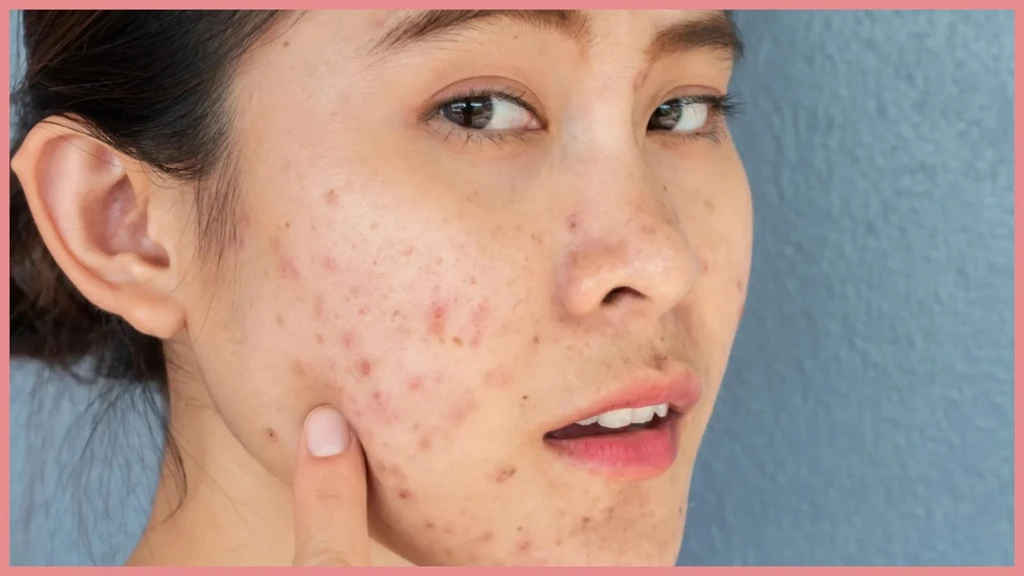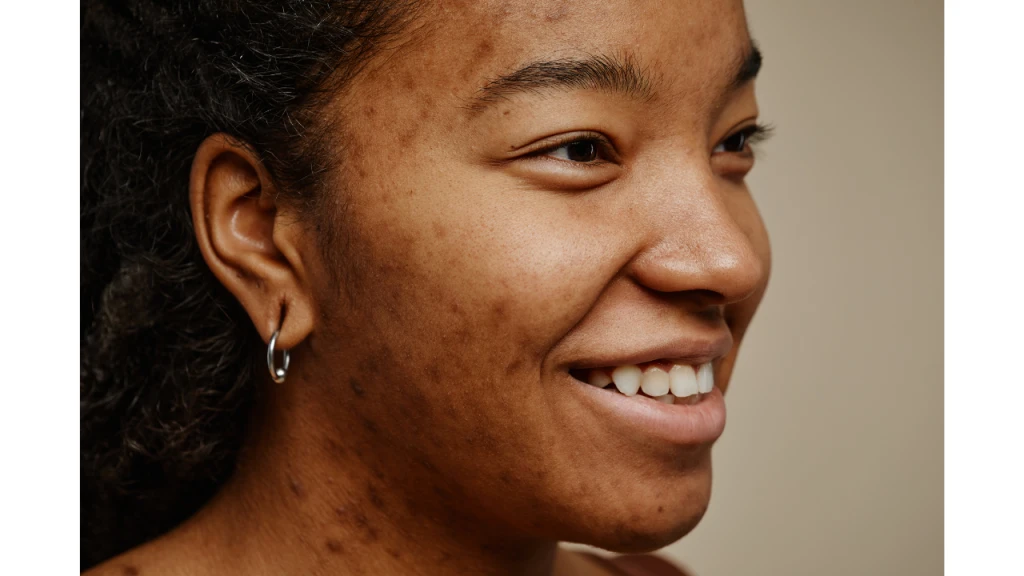How Long Do Acne Scars Last? What to Expect

Tired of staring at the aftermath of past breakouts? You’re not alone. I know acne scars can be frustrating and persistent, but understanding their longevity and available treatment options can empower you to take control.
Acne scars occur when the deeper layers of the skin are damaged during an inflammatory breakout, leading to changes in texture and pigmentation.
In this article, I'll explore the factors that influence how long acne scars last, discuss treatment options, and share prevention tips to help you work toward clearer skin.
How to Fade Acne Scars – Dermatologist-Approved Tips
Types of Acne Scars

Not all acne scars are the same. They vary in appearance and how they respond to treatment, so identifying the type of scars you’re dealing with is an important first step.
Atrophic Scars
Atrophic scars are depressions in the skin caused by a loss of collagen. These scars are divided into three main categories:
- Ice Pick Scars: Deep, narrow indentations that look like tiny punctures. These scars can be challenging to treat.
- Boxcar Scars: Broad, rectangular depressions with defined edges. They often appear on the cheeks and temples.
- Rolling Scars: Wavy indentations that give the skin an uneven texture. These scars are typically wider and shallower than other atrophic scars.
Hypertrophic Scars
These scars form raised, thickened areas of tissue that extend beyond the original acne lesion. They occur when the skin produces too much collagen during healing.
Keloid Scars
Keloid scars are an extreme form of hypertrophic scarring. They are firm, overgrown scars that can grow significantly larger than the original wound.
Keloids are more common in people with darker skin tones, like mine, making proactive care even more critical.
Pigmentation
Changes in skin color often accompany acne scars and can last long after the breakout has healed. These are not true scars but still affect the appearance of the skin.
- Post-inflammatory Hyperpigmentation (PIH): Dark spots ranging from red to brown, caused by excess melanin production during inflammation.
- Post-inflammatory Hypopigmentation: Lighter patches of skin caused by reduced melanin production.
How Long Do Acne Scars Last?
The length of time acne scars stick around varies based on their type and severity. Understanding what to expect can help you set realistic goals for improvement.
Post-inflammatory hyperpigmentation (PIH) often fades on its own within 3 to 12 months, but in some cases, it can persist for up to two years without intervention.
This discoloration is particularly stubborn when exposed to sunlight, so consistent sunscreen use like SunnyDays tinted sunscreen by Tower 28 Beauty at Amazon.com is vital to speed up the fading process.
Mild scars, such as shallow depressions or small marks, may show visible improvement over the course of several months.
However, achieving complete fading is unlikely without targeted treatments, especially for scars that have been present for a long time.
Moderate scars require more patience. Improvements in texture and appearance can take anywhere from six months to a year or longer, depending on factors like skin type, treatment consistency, and overall skin health.
Severe scars are the most persistent. These deep, pronounced marks often take years to show noticeable changes and usually require professional interventions such as microneedling, laser therapy, or subcision.
While progress can be slow, the right treatment plan can make a significant difference over time.
Factors That Affect Acne Scar Duration
The duration of acne scars depends on several factors, each playing a role in how quickly or slowly they improve. Let’s break down the key influences:
- Severity of Acne: Deeper, more inflamed breakouts often lead to more significant scars that take longer to heal. Frequent or untreated breakouts increase the chances of deeper scarring.
- Skin Type: Oily skin may be more prone to certain scars, like rolling or boxcar scars, while sensitive skin can react strongly to treatments, sometimes slowing down the healing process.
- Scar Type: Atrophic scars, such as ice pick or rolling scars, generally take more time to improve compared to hypertrophic or keloid scars, which may respond quicker to targeted therapies.
- Early Treatment of Acne: Tackling active breakouts early reduces inflammation and lowers the risk of severe scarring. Waiting too long to address acne can make scars deeper and harder to treat.
- Skin Color: Those with darker skin tones often experience post-inflammatory hyperpigmentation (PIH) that can take longer to fade. Additionally, some treatments may need to be adjusted to suit darker complexions.
- Sun Exposure: UV rays can darken scars and prolong the healing process, making sunscreen a must to protect the skin and improve results.
At-Home Treatments for Acne Scars
Gentle and consistent care can improve the appearance of scars over time. Here are some effective options:
Retinoids
Retinoids encourage skin cell turnover and boost collagen production, helping to smooth texture and fade hyperpigmentation over time. They can be a bit strong for sensitive skin, so a patch test is essential.
If you’re unsure how to start, consult a dermatologist for guidance on incorporating retinoids safely.
Vitamin C
Known for its brightening properties, vitamin C can even out skin tone, shield your skin from sun damage, and support collagen synthesis. A high-quality vitamin C serum like Ole Henriksen Vitamin C Truth Serum from Amazon.com is a great addition to any routine targeting acne scars.
Niacinamide
Niacinamide calms inflammation and strengthens the skin’s protective barrier. It also helps fade dark marks caused by acne, making it a versatile ingredient for improving skin health.
Hyaluronic Acid
Hyaluronic acid deeply hydrates the skin, which can give it a smoother and plumper appearance. While it doesn’t directly treat scars, it helps create a more even texture, making scars less noticeable.
Sunscreen
Daily use of broad-spectrum sunscreen with SPF 30 or higher is essential. Sunscreen prevents existing discoloration from worsening and protects your skin as it heals, ensuring your efforts to fade scars aren’t undone by UV damage.
Professional Treatments for Acne Scars
For deeper or more stubborn acne scars, professional treatments can provide significant improvement. These procedures are often tailored to your skin type and scar severity, offering results that at-home care might not achieve.
Microneedling
Microneedling involves creating tiny, controlled punctures in the skin to stimulate collagen production. This process improves texture and reduces the appearance of scars over time. Multiple sessions are often necessary to achieve the best results.
Chemical Peels
Chemical peels exfoliate the skin, removing the damaged outer layers to reveal smoother skin beneath. They are particularly effective for mild scarring and pigmentation issues. Be sure to choose a peel that suits your skin type to avoid irritation.
Laser Therapy
Laser treatments can target various types of scars. Ablative lasers work by resurfacing the skin, while non-ablative lasers stimulate collagen production to improve texture and depth. Your dermatologist can recommend the right laser for your specific concerns.
Subcision
Subcision is a minimally invasive procedure where scar tissue tethering the skin is released, allowing the skin to lift and smooth out. It’s particularly effective for rolling or depressed scars and can be combined with other treatments for enhanced results.
Dermal Fillers
Dermal fillers are injected into depressed scars to temporarily smooth the skin’s surface and improve contour. While effective, results are temporary, so periodic touch-ups are needed to maintain the effect.
Acne Scar Prevention Tips
Preventing acne scars starts with proactive care and healthy habits. By following these steps, you can reduce the likelihood of scars forming and keep your skin in its best condition.
Consistent Skincare Routine
Developing a gentle and consistent skincare routine is key to keeping your skin clear and reducing scarring risks.
Incorporate products tailored to your concerns, such as retinoids, which can help prevent breakouts and minimize the potential for scars. For personalized recommendations, consult a dermatologist.
Early Treatment of Acne
Don’t wait for acne to worsen before taking action. Addressing breakouts early reduces inflammation and lowers the risk of developing deep, stubborn scars. Treating acne promptly is one of the most effective ways to prevent long-term damage.
Avoid Picking or Popping
While it can be tempting, picking at pimples only aggravates inflammation and increases the chances of scarring. Keeping your hands off your face can significantly improve healing and prevent unnecessary damage.
Healthy Lifestyle
Your overall health impacts your skin’s ability to heal and regenerate. Eating a balanced diet, drinking enough water, and getting sufficient sleep provide your body with the support it needs to maintain healthy skin and reduce the risk of scars.
Conclusion
Acne scars can be a frustrating reminder of past breakouts, but they don’t have to define your skin’s future. Understanding your scar type, exploring treatment options, and committing to prevention can make a world of difference.
If you’re feeling overwhelmed or unsure where to start, consider reaching out to a dermatologist for a personalized treatment plan tailored to your unique skin. You deserve to feel confident in your skin—let’s make that happen.



